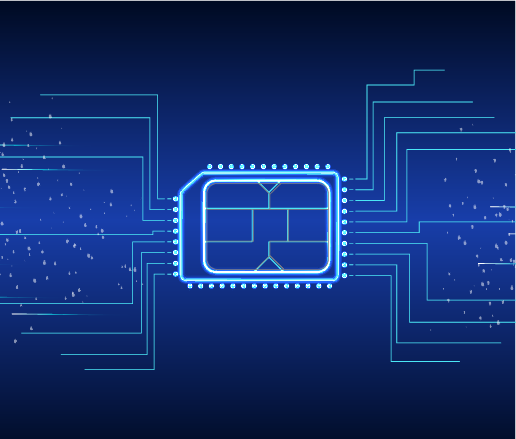The Impact of GSMA SGP.32 IoT eSIM Standard on eSIM Adoption and Beyond
by Baruch Pinto
Almost one year ago, on May 26th, 2023, the GSMA published its SGP.32 remote SIM provisioning specification developed for network constrained or user interface constrained IoT devices. It was welcomed by most of the players within the telecom ecosystem, from OEMs and enterprises that deploy and manage fleets of devices to connectivity solutions providers.
By that time, eSIM technology was widely adopted in consumer markets, particularly with devices like high-end smartphones and smartwatches. However, prior to SGP.32, the number of active eSIMs used for IoT connectivity only surpassed 100 million in 2022. The mass adoption of eSIM for IoT purposes was hindered by limitations that two earlier GSMA specifications had. The M2M Standard (SGP.02) implied certain technical and commercial complexities such as collaboration between service carriers in case of switching from one profile to another, and the Customer architecture (SGP.22) could only work for devices with user interface, which most IoT devices do not have. The new standard unlocked all the value of eSIM, offering a greatly simplified mechanism of remote provisioning and addressing all types of devices.
SGP.32 allows to remotely enable, disable, delete carrier profiles and trigger profile downloads without any technical integrations between network operators. With the new standard, enterprises control provisioning and can easily switch connectivity providers or have a multivendor connectivity provider strategy, as well as handle bulk volumes of profiles and perform profile operations much easier.
We described the advantages of SGP.32 and changes that the new standard brings compared to SGP.02 and SGP.22 in greater detail in our previous posts on the technical and business sides of eSIM. Now let’s look at what’s happening around eSIM a year past the publication of SGP.32 and how experts and analysts see the future of cellular connectivity in IoT.

The future is bright with SGP.32
All experts, though differing in their estimations of the IoT eSIM market, unanimously forecast its rapid and continuous growth until the end of the decade (Counterpoint forecast growth to 2.2 billion IoT eSIM connections by 2030, Omdia – to over 3.6 billion by 2030, Juniper Research – to 1.3 billion by 2028). Most of them directly link it to the impact of SGP.32, expecting the new specification to drive the mass adoption of eSIM in IoT. eSIM was also one of the top IoT trends at this year’s GSMA Mobile World Congress in Barcelona. Attendees specifically discussed the transformation of the global eSIM landscape: China’s growing adoption of eSIM technology, the increasing implementation of eSIMs in various IoT devices and vehicles, and what may be more important for the reasons explained further, advancements in pre-standard development for GSMA SGP.32 compliance.
According to the expert community, SGP.32 is to become the standard for remote SIM provisioning (RSP). It’ll help to overcome M2M and Customer standards’ limitations and in many use cases it is the only possible option to remotely provision SIMs in constrained devices. However, experts believe that SGP.02 and SGP.22 will still be used: certain use scenarios might not require any changes and in some cases just due to inertia. The new IoT standard will be supported by all players in the market, since many enterprises will be interested in using it. The only thing that remains unclear is when exactly this is going to happen.
Timelines
The new IoT standard was expected to become available for use in 2024. However, the timelines have been somewhat stretched, and most recent reports say that SGP.32 will not be truly available until 2025. To finalize the standard, SGP.33, the testing and certification specification for the SGP.32 components (eUICC, eIM, IPA) needs to be completed. The eUICC part was published last month, but testing for full compliance cannot commence until the other parts of the standard are available, which, according to experts, is expected sometime in the autumn of 2024.
Yet it’s not enough just to have these processes completed. The real shift in the industry will begin with the mass use of the standard in IoT products, and it will take some time, too. Analysts say it could easily be 2027 before early adopters can get SGP.32 compliant products into market. It could be even longer, given the increase in time to market by 80% in the last four years and the fact that now it takes OEMs an average of 41 months to bring their connected products to the market.
Pre-standard solutions
In these circumstances, many enterprises opt to use proprietary pre-standard solutions compatible with SGP.32 requirements for their IoT deployments. Moreover, there are solutions that have already been thoroughly tested and commercially deployed, such as WebbingCTRL, which successfully ensures over 1 million connections across various industries. These solutions can help enterprises reap all the benefits of the new standard without waiting for the completion of all testing and certification procedures. However, what is also important in that regard is the solutions’ architecture, as it will be critical for compatibility and seamless transition to SGP.32.

Yet another standard?
IoT applications and use cases are very diverse. A common approach to RSP is focused on managing the SIM in a device after it has been deployed into the field, but there are certain scenarios where SIM provisioning might be performed by setting the initial SIM profiles during the manufacturing stage. This approach is called In-Factory Profile Provisioning (IFPP). To support IFPP, the GSMA initiated a new standard for eSIM called SGP.41/42, which is also awaiting completion. The idea is that the profiles are uploaded to the device at the same time as firmware/software loading or when firmware is updated during personalization before the device ships. It can be beneficial for certain use cases: for example, smart meters that have no access to power once they are deployed and therefore need to minimize the amount and frequency of communication to and from them to save battery. However, this type of provisioning seems to have limited application, since it requires OEMs’ prior knowledge of where and how devices will be used, which oftentimes is not the case with IoT products.
eSIM and RSP help reduce waste and emissions
There’s another important thing in the context of discussion around eSIM for the companies that focus on sustainability. Along with the obvious benefits of simplifying IoT connectivity management and helping overcome the challenge of global coverage, eSIM technology and the new IoT RSP standard have a significant environmental impact. Remote profile management capabilities eliminate the need for physical SIM cards, reducing electronic and plastic waste. Additionally, the elimination of physical SIM card shipments to IoT devices helps reduce emissions associated with logistics. These environmental benefits make eSIM a sustainable choice for IoT connectivity.

Webbing’s Solution
Our eSIM solution, WebbingCTRL, ensures failover connectivity with the capability of using multiple mobile carrier profiles, easily changing carriers at any time with zero integration, and an option to fall back from a failing profile to a different profile without any need to communicate with a remote server. Webbing’s eSIM is aligned with the GSMA SGP.32 IoT eSIM specification, which means it will be fully compatible with the new standard when it becomes ubiquitous. Millions of WebbingCTRL eSIMs/SIMs have already been deployed globally since its release.
Our solution’s architecture is similar to that of SGP.32. Just like with the new GSMA IoT standard, remote provisioning with WebbingCTRL does not require any operator integrations or collaborations. It enables organizations to remotely add, remove, and swap carriers for any number of IoT deployments.
Along with all the functionalities of the new standard, WebbingCTRL has additional capabilities: companies can set up business rules that would allow devices to change the serving operator automatically under specific conditions, such as location, country, loss of connectivity or even after a certain amount of time. It also provides a centralized way to manage eSIMs/SIMs lifecycle and profile inventory, as well as visibility into device data usage.
WebbingCTRL platform can work with both SGP.32 and SGP.22 standards, and also supports M2M devices for relevant use cases. It provides a single pane of glass to manage all devices deployed regardless of the standards used.
Webbing’s partner network of over 600 mobile operators worldwide guarantees global coverage. Our connectivity solution gives access to several carriers’ networks at any location, ensuring continuous connectivity without having to contract with multiple operators.
Webbing’s distributed core network with local breakouts, multiple network solution, and data server redundancy provides connectivity stability and low latency. It also allows to easily comply with local regulators’ requirements and helps to adapt to any changes in legislation. Besides, it gives enterprises the ability to quickly scale their deployments or adjust their existing fleet management to any business scenarios.
Reach out to [email protected] to learn more about our solutions.




